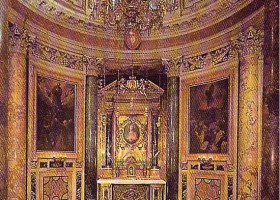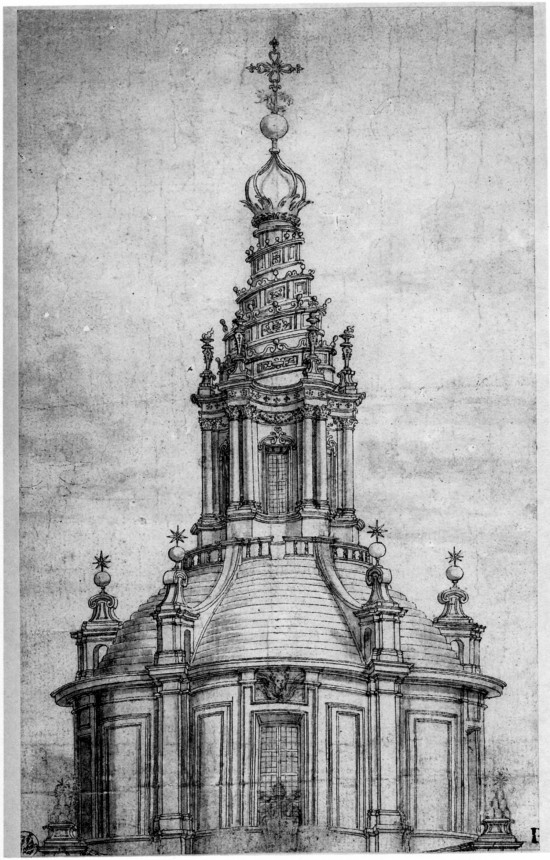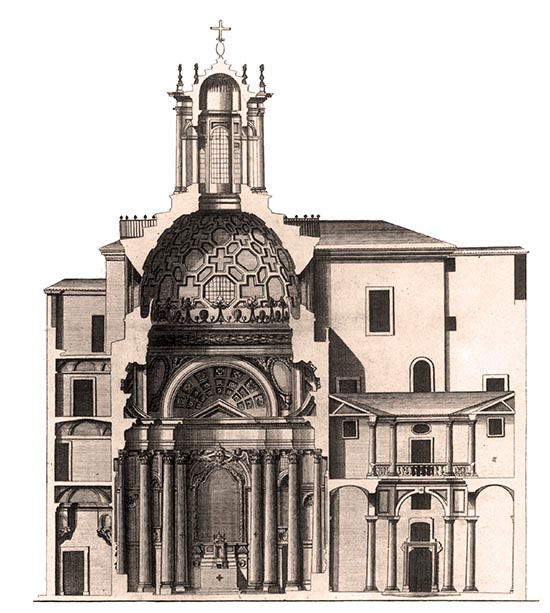For the entire seventeenth century, Rome was the unquestioned protagonist of Baroque architecture and art. This style, which developed during the course of the seventeenth century, in Italy proves closely linked to the cultural spirit of the Counter-Reformation, and, therefore, to the patron popes. The realizations of this historical period are characterized by a strong illusionistic nature and designed to arouse wonder and to amaze the viewer.
It must be said that, in the field of religious architecture, the Church needs to respond programmatically to the accusations of the Lutheran Reformation. As a result, the recuperation of its role in the Western Christian world avails itself of the language of art. The artist is called upon to express the message of the Church of Rome in an accurate, engaging and persuasive manner. This is achieved through highly illusionistic painting, which uses instruments like the trompe l’oeil, and celebrates the life of the major saints and leading figures of the main orders, which gave impetus to the spreading of the Christian message.
For this reason, even the architectural layout of Churches corresponds to specific criteria: the nave is unique because the believer has to focus on the altar and on the communicative part of the liturgy. This requirement was clearly stated by the dictates of the Council of Trent.

Chiesa del Gesù, Cappella del Sacro cuore.
Among the main churches designed and built during this period we first come across the Chiesa del Gesù. This building represents the model par excellence of the Baroque church. Bound to the founder of the order of the Company of Jesus, Saint Ignatius of Loyola, the Church of Jesus (Chiesa di Gesù) treasures the tomb of the saint in its left transept. The building dates back to 1627 and is characterized by the presence of paintings to be observed from a specific spot on the floor. In fact, Andrea Pozzo’s painting of a fake dome on the ceiling, can be grasped in all its perspective and illusionistic strength only by standing on the yellow marble disc on the floor. The vault of the nave is the work of the Andrea’s father, and it represents the Glory of St. Ignatius. Facing the church is the square of St. Ignatius, designed by Filippo Raguzzini and built in the rococo style during the eighteenth century.
Sant’Andrea della Valle is likewise a symbol of the Roman Baroque and of the activity of another monastic order, the “Theatines.” It rises in Corso Vittorio Emanuele II and is characterized by the presence of a monumental façade. Its construction is linked to the name of the famous architect Carlo Maderno, who also completed the high cupola, second in height to that of St. Peter’s Basilica. The interior has a single nave with six side chapels and a barrel vaulted ceiling. The frescoes on the dome are the very famous work of two well-known Italian artistic personalities, Giovanni Lanfranco and Domenichino, and depict through visual images, the Glory of Heaven and the Evangelists and the Stories of St. Andrew in the basin of the apse.

Borromini, Sant’Ivo alla Sapienza.
Sant’Ivo alla Sapienza is found in Corso Rinascimento, dominating the cityscape with its wonderful bell tower. Its facade is peculiar, since it appears rather concave; it’s the work of Francesco Borromini, to whom Pope Urban VIII commissioned the project in 1632, as part of the construction of the Palazzo della Sapienza. Yet, it is only in 1660 that Alexander VII Chigi consecrates the church, elegant and refined, with a high tholobate (or drum, connecting element placed at the base of the dome), great windows and lesenes (also known as pilaster strips – small vertical pillars leaning against the wall). Not to be missed, inside we find stucco decorations with symbols belonging to the Chigi family, such as stars and mountains with six peaks and other Christian symbols. Furthermore, the high altar is decorated with an altarpiece bound to the genius of Pietro da Cortona.
Where once rose another church, the St. Paul of the Discalced Carmelites, we now find the Church of Santa Maria della Vittoria. It was rebuilt thanks to Cardinal Scipione Borghese and the project was commissioned to Stefano Maderno. The interior has a single nave and three side chapels and it is famous for the presence of a chapel bound to Gian Lorenzo Bernini: the Cornaro chapel. Here Bernini created the sculptural group known as The Ecstasy of St. Teresa of Avila, forged in marble and unique for its great emotional impact.
Among the smaller but more evocative buildings of the Baroque age is the church of San Carlo alle Quattro Fontane, better known as the church of San Carlino. Designed by Borromini, it’s construction begun in 1638 and was completed six years later. It is characterized by the presence of concave and convex lines that create a vibrant and lively effect. The plant is ellipsoidal, and to the inside of the dome corresponds an external drum with a little lantern decorated by niches. Inside, the decoration consists in coffers, which create a particular and refined pattern.

Section of San Carlo alle Quattro Fontane, ca. 1730.


